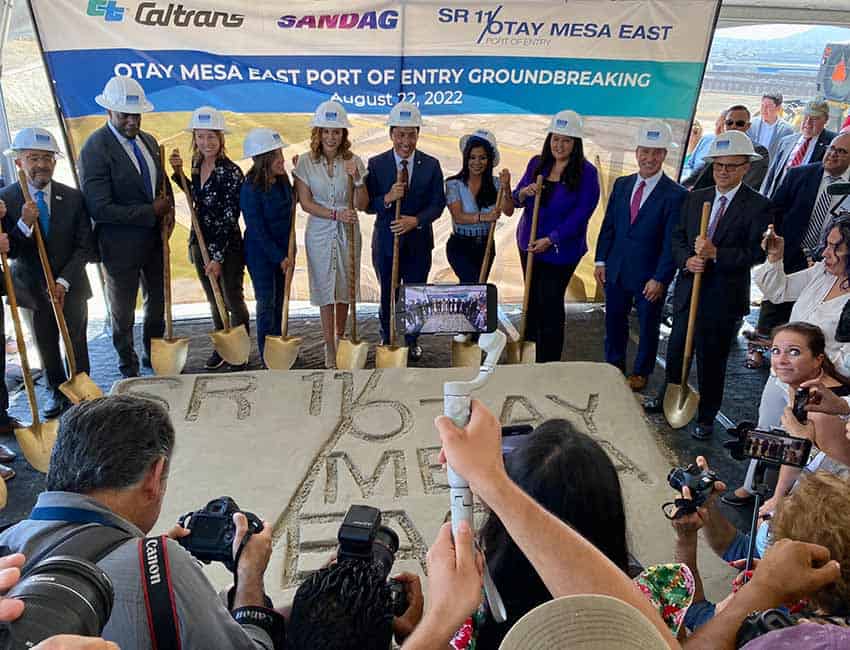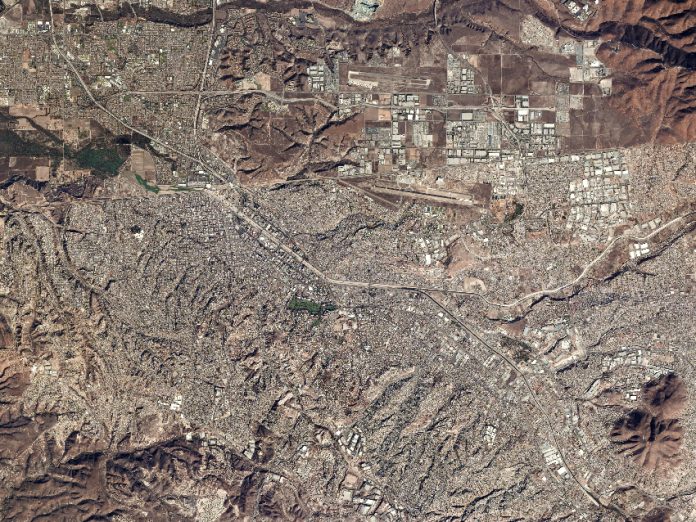Whenever I travel from Mexico City to my hometown of San Diego, I always fly through the Tijuana International Airport. I take advantage of something that few travelers know: it extends to the U.S. side of the border.
It is built right against the border wall and a sealed bridge travels up and over the physical fence, allowing quick and affordable travel between San Diego and Mexico.
I’m sharing this for a few reasons.
First, it’s a massive travel hack.
If you’re traveling between Southern California and Mexico, it almost always saves you money (it’s a domestic flight within Mexico) and time, thanks to highly expedited customs and immigration cooperation. And with the surging cost of air travel, the savings add up.

Secondly, the Tijuana airport connects to 39 destinations within Mexico, making it easy to fly direct to many airports not serviced by LAX or San Diego. It also has direct flights to China and Japan, a byproduct of the city’s many maquiladoras (export-focused factories for foreign companies, many of which are Asian).
But more importantly, it’s a bright star in the often rocky relationship between my countries of birth and residence, an area of cooperation that has advanced despite (and during) surging nationalism and an example of how San Diego and Tijuana are increasingly becoming a single city separated by a shared border.
In fact, San Diego-Tijuana is one of the world’s largest binational metropolitan areas, with a combined population of 5 million people. And as I witness the ties deepen between Mexico City and other North American cities, my hometown is an example of cutting-edge bilateral collaboration.
Many of the following facts are pulled from the excellent book, “Vanishing Frontiers: The Forces Driving Mexico and the United States Together” by journalist Andrew Selee. The first chapter is dedicated to SD/TJ, which warmed my heart and inspired this article.
The cross-border airport (called Cross Border Express, or CBX) came about when San Diego city planners were looking to expand our airport, which is wedged between downtown and the harbor and constrained to a single runway. This has limited the city’s economic expansion, as larger planes can’t land here. But Tijuana International Airport has much more runway space and capacity for planes large enough to cross the Pacific.
So instead of expanding or relocating San Diego’s airport, they simply built a bridge over the border straight into the Tijuana Airport. Now San Diegans can check into their flight on the U.S. side, breeze through customs and be eating Ensenada-style tacos in Tijuana 20 minutes later.
For Mexicans, the American terminal has car rental agencies; shuttles taking you as far as Disneyland, Los Angeles, Arizona, and Las Vegas; and a relatively smooth immigration experience. It’s also right next door to the Otay Mesa outlet malls for bargain shopping.
CBX was funded by private investors, who took a gamble on the concept. But it’s been a huge hit.

I used it shortly after its opening in 2015 on my first trip to Mexico City. Since moving here, it’s become the only way I travel to California. And from what I have witnessed, it’s a common way for Mexican immigrants to visit family back home.
During my recent trip, I was surprised to enter a completely remodeled terminal that was even faster and easier than the previous one. The upgraded terminal cost 2 billion pesos (US $102.5 million) and is 83% bigger, has 75% more capacity and 25% more immigration processing lines.
And with plans to expand service in Asia and Latin America, it’s an example of how the cities are fusing into a major economic region.
After a couple of years of shuttling between Mexico City and San Diego, I’ve come to appreciate these connections even more. It’s no surprise that both San Diego and Tijuana have some of the best craft beer in their respective countries — brewers frequently cross the border to swap recipes. And while Americans fly to CDMX to eat at award-winning restaurants like Pujol or Contramar, the city’s top chefs are building outposts in New York and Los Angeles.
Some other examples include how maquiladoras increasingly send goods back and forth across the border during different stages of production, how the La Rumorosa wind farm east of Tijuana produces green energy for San Diego Gas and Electric, and how the entire state of Baja California is connected to the U.S. power grid — not Mexico’s.
More importantly, the percentage of San Diegans who say their city’s future is closely tied to that of Tijuana has gone up from 9% in 2012 to over 70% now.
But clearly, challenges remain. For too many, the border is still an all-too-real barrier. There are many Mexicans (and other nationals) who are unable to cross the border in pursuit of the American dream. And while these stymied immigrants often settle in Tijuana and enrich the local culture (especially the food), it’s impossible to ignore how much easier it is to travel south than north.
And despite Mexico City’s explosive popularity with millennials, many Americans continue to view the country as a source of violence and unwanted problems, even as Aeroméxico trolls such bigotry in this viral ad from 2018:
Nevertheless, in an era when so many call for more walls, it’s refreshing to see bridges being built between cultures.
- This article was originally published on The Missive on Substack. Minor editorial changes have been made to the original.
Marko Ayling is a life-long traveler and the creator and host of Vagabrothers, one of the most trusted and popular travel shows on YouTube, with 1M+ subscribers worldwide. He now writes “The Missive” on Substack, a weekly dispatch of travel tales, reading recommendations, and curated cultural recommendations.
